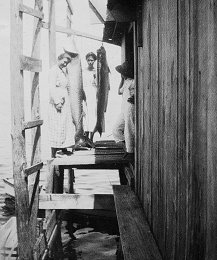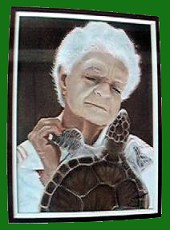
Thanks for all the traffic about Ila “the turtle lady” in the topic below this one. I wanted to add that this was quite a successful year for nesting turtles on our section of South Padre Island, with maybe a dozen nests found, saved, hatched, and released into the Gulf.
The map of the Gulf and Texas coastline shows basically where we are, with our town being at the very bottom of the black part called the Laguna Madre – the only bay saltier than the ocean in the entire US.
To expand upon the environmental theme, things are looking up in many regards. There is no red or brown tide, often a sign of stress in the waters and a cause of some devastating fish kills in the past. While rainfall has been desperately low, relatively warm winter temperatures have allowed many wildlife species to recover quite nicely – there was a minor fish kill of mullets and other rough fish after last December’s near freeze (apparently it is not the absolute temperature, but how fast it drops).
We have a lot to brag about. The flooding of the Bahia Grande, a major former wetland land-locked by the US Army Corps of Engineers (circa 1933-1960) when building the Brownsville Ship Channel; the Bahia is now re-flooded and the birds and aquatic creatures are coming back fast. Even better, the flooding has helped prevent massive dust storms common in the early spring when the winds were high.
On the beachfront, the water appears to have been in the “green” zone because water samples do not indicate the presence of harmful entero-bacteria – while many other beaches in the US had to be closed this summer. Things are doing so well, sometimes we might forget some of the issues which lurk behind the scenes.
Threats to the local ecology and environment take several forms. These mainly take the form of (1) habitat loss, (2) beach erosion, and (3) water inflows to the Laguna Madre.
Habitat loss is the number one problem on SPI. Simply stated, the land is worth up to $200,000 per 50-by-100 foot section and it is being plowed under at an alarming rate. Nobody has taken any moves to purchase these “wild” tracts of land as conservation land within the town limits except one small tract near Pompano Street. The impact on coastal and migratory species is not fully known, although the loss of reptiles can be fairly well demonstrated. Only one or two areas of Tepaguaje trees stands remain – the inland part of this part of the Island used to have rampant thorny brushland trees. Continued development of county land to the north and south of the town continues to threaten the dune and wetland ecosystems.
Beach erosion is worse as one progresses north from the Brazos Santiagos Pass. Sand is accumulating at the southern end but is losing three to eight feet a year north of Oleander Street. There have been several efforts to combat this, although the preferred strategy appears to be pumping high-clay sands from periodic dredging of Brazos Pass, although mostly in the southern parts where it is least needed. The beachfront is just now recovering from all the clay sands deposited several years ago, which caused high turbidity and perhaps even a major shellfish die-off. However, the sloping and gutting of the beachfront, without even a major tropical storm this season, is quite alarming. Such sloping and gutting could cause failure of large sections of the beach if heavy north winds set up this coming winter and spring, especially between Oleander and the north Town limits. There is currently no active plan for beach renourishment, and the continued use of tractor beach rakes is only making matters worse. (In defense of the beach rakes, it does promote tourism and the tailings are used for beach dune restoration – it is just that some weed should be left on the northern beaches where the severe erosion in occurring.)
Water inflows include wastewater, runoff, stormwater drains, and inflows from streams such as the Arroyo Colorado. The Arroyo is officially listed as an impaired water body by the EPA and state agency (TCEQ). Dissolved oxygen is its main problem. It is truly remarkable that the lower Laguna Madre has not suffered from these impaired waters, perhaps due to the large blooms of sea grasses and the biology of blue-green algae (cyanobacteria). What is not known is what would happen if it actually rained. Local rainfall rates are over a foot and a half shy of the climactic average if one considers the last two years. This has several consequences, first being that the bays and Bahia Grande (discussed above) are becoming even more hypersaline, close to the point of producing salt crusts. The second issue is what happens if we experience extreme flooding.
One hypothesis is that flooding conditions – maybe defined as a very large areal coverage of several days of more than an inch of rain each day – could mobilize tons of material that has been stored on the ground and on impervious surfaces for the last two or three years. This would include animal feces, lawn chemicals, crop chemicals, atmospheric dust, soil, vehicle and road oils, other non-point pollutants, and some point sources such as storm sewer outfalls. These effects can only be a matter of speculation. However, as we move into a late-season El Nino condition which could cause cooler and wetter winters in the southern US, it perhaps could only be a matter of time before the results are truly known.
In conclusion, things are doing very well although I though it was useful to note the threats we have. For example, we do not use stormwater runoff ponds to help clean the water before being spewed into the local water bodies, which is a common practice in other parts of the US. But for a nearly pristine environment, with some limited planning and investment, our environment could be preserved for generations to come. This report was not documented with references as a “real” environmental study. Instead it was meant to provoke some thought, some comments, and some local action.






